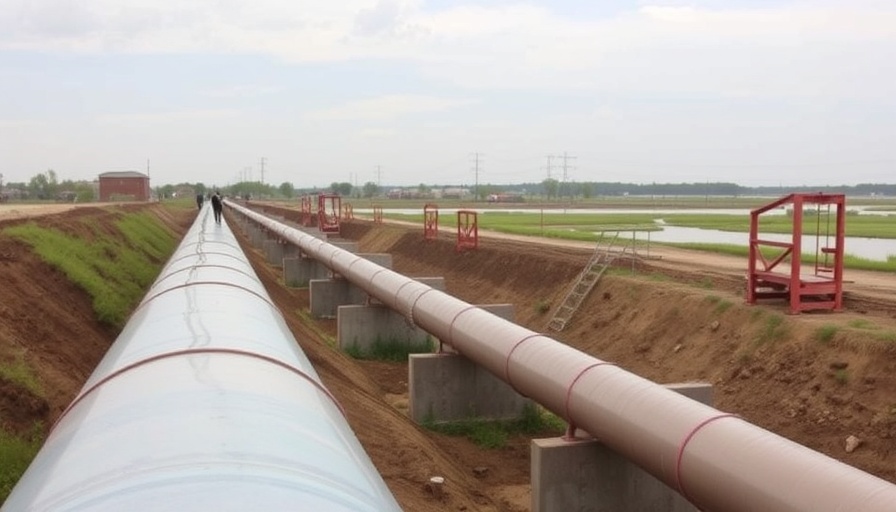
Improving Public Transit: LA's G Line Busway Project
On March 28, 2025, Los Angeles made a significant stride in its public transportation system with the groundbreaking of the $668 million G Line busway overhaul, a project poised to enhance mobility in the San Fernando Valley. This venture not only aims to expedite bus trip times by at least 12 minutes—translating to a 22% improvement—but also promises to create a safer commuting environment for all road users.
The Need for Speed: Why This Project Matters
With Los Angeles gearing up for the 2028 Olympics, the timing for the G Line busway improvements couldn't be better. As the city prepares to welcome millions of visitors, efficient public transport has become a priority. Current estimates suggest that travelers can expect new bus headways of just five minutes, which will significantly reduce wait times and make public transit a more viable option for many residents.
Key Features of the G Line Overhaul
The upgrades will involve constructing grade separations and implementing railroad-style gated intersections. These changes are designed to minimize instances of motorists inadvertently entering the busway, thereby boosting safety for both bus riders and car drivers. This initiative is particularly crucial in a city where road safety has often been compromised by heavy traffic and congestion.
Funding the Future: How is the Project Financed?
Funding for this ambitious project comes from multiple sources, including the 2016 Measure M and Proposition C voter-approved sales taxes, as well as California's Senate Bill 1 (SB-1), which allocates gas tax revenues. This diverse funding strategy demonstrates a commitment to improving infrastructure and public services in Los Angeles.
Community Reception and Future Prospects
According to Janice Hahn, chair of Metro and Los Angeles County supervisor, the G Line improvements mark the most significant investment in the bus line’s nearly two-decade history. She expressed optimism that these enhancements would not only make the bus line faster and safer but also inch closer to the long-term vision of converting the line to light rail.
The Bigger Picture: Impact on Local and Regional Transportation
The G Line upgrades are more than just a local improvement; they reflect a broader commitment to enhancing public transit across California. The project aligns with the state's goals of reducing vehicular traffic, encouraging public transit use, and decreasing overall pollution levels. By investing in infrastructure that promotes bus rapid transit, Los Angeles is setting an example for other cities to follow.
Steps Forward: What Homeowners and Contractors Should Know
Homeowners and contractors in the San Fernando Valley should be aware of the forthcoming alterations to traffic patterns and potential construction disruptions. However, these improvements also represent opportunities for local businesses to thrive in a more accessible environment. Contractors, especially, may find an increased demand for services related to home upgrades as public transport becomes more reliable.
Actions You Can Take: Preparing for Changes in Your Area
As construction progresses, residents can stay informed through local news outlets and community boards. Engaging with community discussions can also provide homeowners insight into the best practices for navigating the new transportation landscape. Whether it’s finding alternate routes during construction or capitalizing on increased accessibility to enhance property values, being proactive will benefit everyone.
In summary, the G Line busway project demonstrates Los Angeles’ commitment to improving public transportation, safety, and urban planning. As the city moves forward, residents can look forward to a more efficient commuting experience, ensuring that the infrastructure keeps pace with the population's needs.
 Add Row
Add Row  Add
Add 






Write A Comment